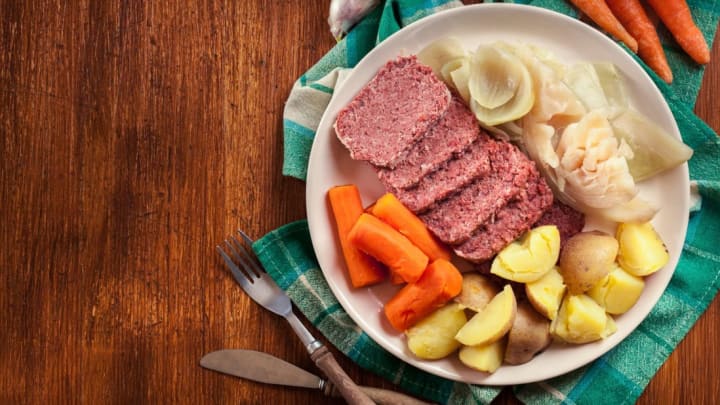Many St. Patrick's Day traditions originated in the U.S., like the compulsion to dye everything from our booze to our rivers green. One of the most prominent examples of the holiday's Americanization is its official dish of corned beef and cabbage. Though it's thought of as the quintessential Irish meal in America, the grub was actually popularized in New York City.
Corned beef doesn't contain any actual corn. It's a cut of beef, usually brisket, that's cured using salt. The salt consists of larger grains of rock salt, or salt "corns," which is how the product got its name.
Salt is a natural preservative, and "corning" beef started as a way to keep meat from going bad without refrigeration. While Ireland was producing salted beef as far back as the Middle Ages, most of it was exported, as the average Irish family couldn't afford the luxurious cut of meat. If they did eat meat, it was usually the much cheaper salt pork. This product is similar to bacon, and it was commonly prepared with cabbage in Ireland.
When a wave of Irish immigrants settled in the New York City in the early 19th century, they had to adjust their eating habits. Cured pork was no longer as cheap and plentiful as it was back home. Looking for an alternative, many Irish immigrants turned to the Jewish butchers in their neighborhoods. There, they found kosher corned beef, which was not only cheaper than salt pork at the time, but had the same salty savoriness that made it the perfect substitution. Resourceful immigrants began cooking their cabbage with corned beef instead of pork, and the Irish-Jewish-American fusion dish became associated with Irish culture—and therefore St. Patrick's Day—in America.
Corned beef and cabbage isn't the only thing that's misunderstood about St. Patrick's Day. Here are some more facts about the holiday.
